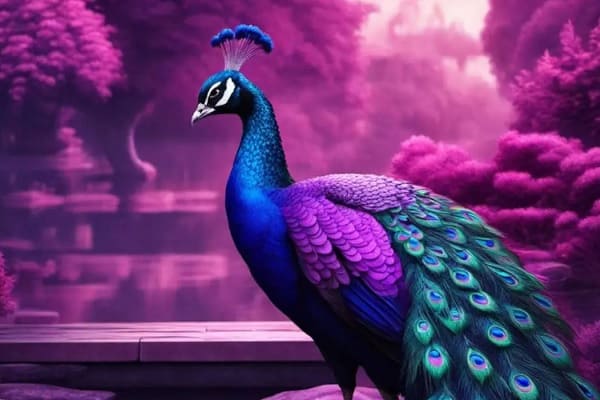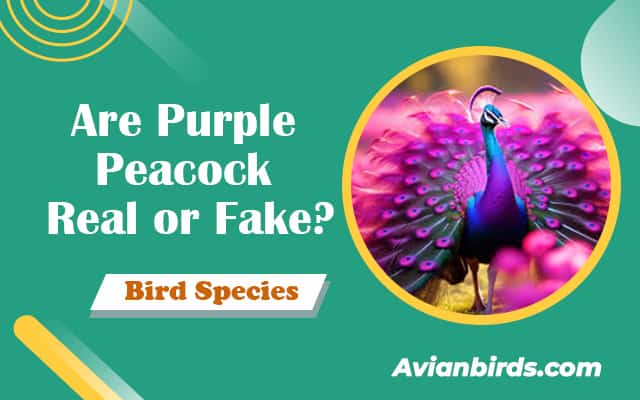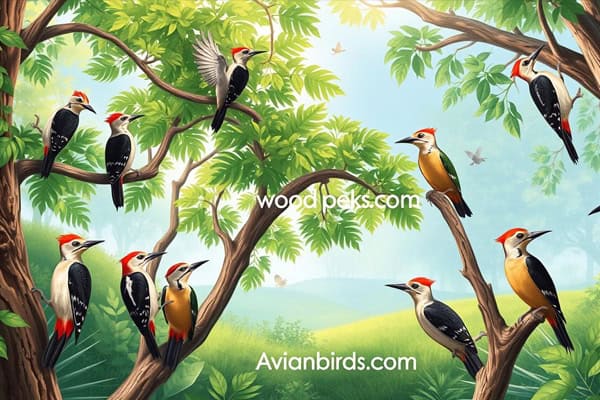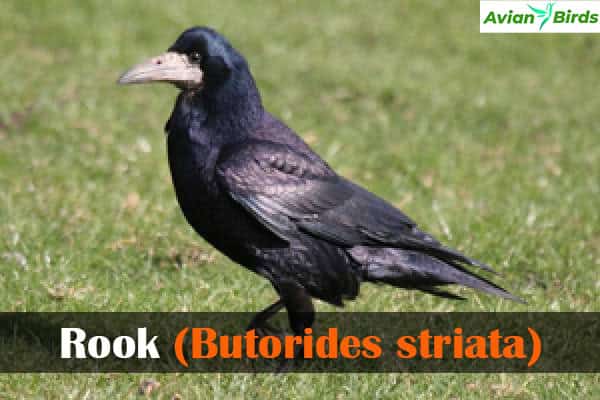Are Purple Peacock Real? Unlocking the Mystery
What do you think Are Purple Peacock Real OR Fake?
Imagine a world where majestic peacocks roam freely, flaunting vibrant hues of blues and greens. But what if there were peacocks with a twist of purple in plumage? Are purple peacocks real or just a product of imagination? Let’s delve into this intriguing topic and explore the fascinating world of peacocks.
The Origin of Peacocks:
Peacocks, scientifically known as Pavo cristatus, are native to South Asia and are renowned for their extravagant plumage and distinctive train of feathers. These birds have long been admired for their beauty and grace, often associated with royalty and luxury.
Subspecies of Peacocks:
- There are three main subspecies of peacocks: Indian Peafowl, Green Peafowl, and Congo Peafowl.
- Each subspecies exhibits unique characteristics in terms of size, coloration, and behavior.

The Myth of Purple Peacocks:
Purple peacocks are often depicted in art, literature, and folklore as symbols of rare beauty and mystique. However, in reality, there are no naturally occurring purple peacocks in the wild.
Variation in Coloration:
- The vibrant colors seen in peacock feathers are a result of structural coloration, not pigmentation.
- Genetic mutations or selective breeding can lead to variations in color, but true purple feathers are not a natural occurrence in peacocks.
Domestication and Breeding:
Through selective breeding, humans have created hybrid peacock varieties with unique color patterns, including shades of purple. These domesticated peafowl may exhibit an array of colors not found in their wild counterparts.
Breeding for Color:
- Breeders may cross different peafowl subspecies to create hybrids with desired color traits.
- Artificial selection has played a significant role in cultivating diverse plumage colors in captive peacocks.
Conservation and Protection:
While the idea of purple peacocks may capture the imagination, it is crucial to prioritize the conservation of wild peafowl species. Habitat loss, hunting, and climate change pose significant threats to peacock populations worldwide.
Conservation Efforts:
- Wildlife conservation organizations work to protect peacock habitats and raise awareness about the importance of preserving these iconic birds.
- Sustainable practices and eco-tourism initiatives can help support peacock conservation efforts in their natural environments.
Final Thoughts:
In conclusion, while purple peacocks may remain a fantastical notion, the beauty of traditional peacock species is undeniable. These birds continue to enchant and inspire people around the world with their stunning displays and symbolic significance. By appreciating and safeguarding the natural diversity of peacocks, we can ensure that these magnificent creatures thrive for generations to come.
Remember, the true allure of peacocks lies not in their color, but in their intrinsic beauty and grace that transcend mere pigment.
“The beauty of a peacock lies not just in its plumage, but in the spirit it carries within.”
Explore more about the conservation efforts and importance of protecting peacocks in the wild: Wildlife Conservation Society.
Check Our Previous Article
Frequently Asked Questions About Purple Peacocks
Q1: Is there a real purple peacock?
No, there is no naturally occurring purple peacock. Peacocks typically display iridescent blue and green colors in their plumage.
Q2: Is Purple a peacock color?
Purple is not a common color for peacocks. Their natural colors include shades of blue, green, and brown.
Q3: What colors do peacocks come in?
Peacocks primarily come in shades of blue, green, and brown. They exhibit iridescent plumage with metallic hues.
Q4: Which peacock is the rarest?
The rarest peacock is the Green Peafowl (Pavo muticus), also known as the Java Peafowl. It is native to Southeast Asia and is threatened by habitat loss and hunting.
Q5: What is a golden peacock?
A golden peacock typically refers to a peafowl with golden or yellowish plumage. It is not a distinct species but can be a color variation of the Indian Peafowl (Pavo cristatus).
Q6: Is peacock blue or purple?
Peacock feathers exhibit shades of blue and green rather than purple. While there may be variations in hue depending on the light, purple is not a common color in peacock plumage.







